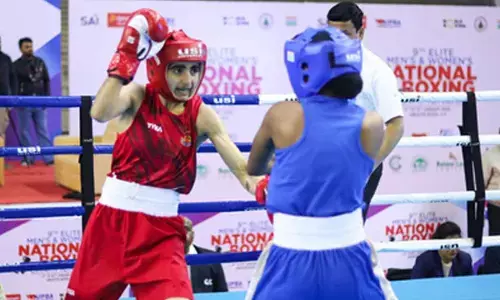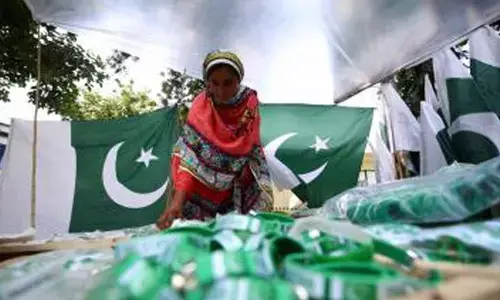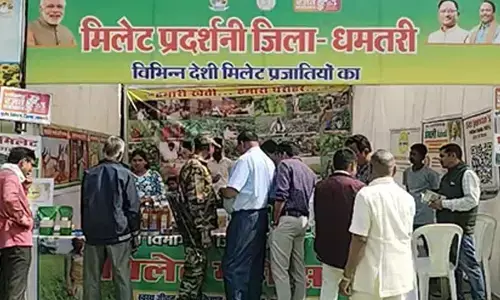Challenges are manifold in vaccine preparation for tackling coronavirus

Challenges are manifold in vaccine preparation for tackling coronavirus
Efforts are also being made to find an antidote - the corona vaccine - as fast as COVID-19 is spreading worldwide
Efforts are also being made to find an antidote - the corona vaccine - as fast as COVID-19 is spreading worldwide. About 218 vaccines are in various stages of testing in hundreds of laboratories around the world. Although not a single vaccine has been completely successful so far, about two dozen vaccines have crossed basic levels and reached the clinical trial stage.
Three or four of these are in progress and hope to give the world a vaccine in a few months. One of them is being developed under the auspices of the British Astrazenica-Oxford University. Both vaccines are from the Chinese companies Sinopharm and Sinovac.
The vaccine, developed by the American company Moderna, also competes with these. With the outbreak of the novel corona virus in December 2019, efforts began to make vaccines worldwide to protect against the disease. The virus was first found in Wuhan, China. Chinese scientists soon discovered the genetic structure of the new virus and put it on the Internet on January 11.
It has contributed to worldwide research. Vaccine preparation trials began in several laboratories as early as February. It usually takes several years to make a vaccine, even more than 10 years at a time.
However, the vaccine may fail to achieve its intended goals in the final stages. Then the billions of rupees spent on vaccine preparation will be wasted. That is why universities and research institutes join hands with multinational companies in vaccine research. If the vaccine is successful, multinational companies will reap enormous profits. Corona vaccine production is now almost 60 percent under the control of multinational companies.
There are three main stages in vaccine preparation. The first is to plan and prepare the vaccine. The second is the preclinical phase. The prepared vaccine is tested on a variety of animals. If the correct results are obtained at this stage, the third stage of application to humans will be entered. The third is the clinical stage. It again consists of three stages.
In stage 1, a few healthy volunteers are tested to see if the vaccine is safe. Vaccine efficacy is tested in stage 2. If the capacity does not exceed 60, the vaccine will not work. If it crosses 70 it seems to be successful. Beyond this stage the third stage experiments will be performed on thousands of people.
The effect of the vaccine on children, the elderly, and pregnant women will be examined. The vaccine is produced when this stage is completed and good results are obtained. They also determine how the vaccine should be administered (in the form of intramuscular injection, skin vaccine, oral drops, etc.), how it should be stored, and how it should be transported. Regulatory bodies at the national and international levels review and approve research data from the respective stages.
The World Health Organization (WHO) acts as a regulatory body internationally. There is no guarantee that every vaccine will reach the final stage. Experience so far has shown that 84 to 90 percent of vaccines fail in the third stage.
Vaccine preparation usually takes several years. But since the corona risk is engulfing the world, regulatory regulations are designed to speed up the production of this vaccine. Clinical trials that lasted for years were shortened to a few months. There is a large-scale international coordination of vaccine production. There is also competition between countries and corporate entities. The International Council for the Prevention of Infectious Diseases (CEPI- Coalition for Epidemic Preparedness Innovations) is working to produce the vaccine as quickly as possible.
It has set up a $ 200 crore (approximately Rs. 14,000 crore) fund for the production of the corona vaccine. At the call of the World Health Organization on May 4, 40 countries agreed to provide another $ 810 billion in funding. Apart from these, the Milinda Foundation, as well as many other corporate charities and charities have announced assistance.
China is a leader in vaccine production and research. So far 22 vaccines have reached the clinical stage and most of them are 8 vaccines from China. Two of the four vaccines that reached the third stage clinical trials were from China. China does not have much experience in vaccine production in the past. But China, which has been making inroads in technology in recent times, has also become a leader in this field.
The Chinese government, military and private companies are working together to produce the vaccine. The World Health Organization has approved the production of seven vaccines for India. Among them, Covaxin, manufactured by Bharat Biotech, Hyderabad, has been approved for clinical trials. The first phase of clinical trials on 385 volunteers are being conducted in different parts of the country.
The Zykov-d vaccine, manufactured by Zydus Cadilla of Ahmedabad, has also recently been approved for first-stage clinical trials. The remaining five vaccines are in the early stages. India has a long experience in the production of vaccines. India exports 60 to 70 per cent of the world's vaccines.
Once the vaccine is made, there are many challenges in its distribution.
1. If the vaccine is OK then producing enough for all people is a big challenge. It is not yet clear whether one dose of the vaccine is sufficient or two doses. 1,2 Clinical trials suggest that a single dose may be sufficient for some. But its capacity has been declining for some time. Then there is the risk of corona infection again. In that case two doses of vaccine are required. 700 crore doses are required to give a single dose to the entire population. It is expected to take at least a year to produce. If you want to take two more doses ...!
2. The second challenge is to whom the vaccine produced should be given first and then to whom. Countries naturally advance their national interests. As well as the rich countries from the multinational drug companies, if the rich buy in advance, the poor countries, the poor are at risk of not getting the vaccine. For example, the United States has already paid $ 120 billion in advance for 30 million doses of the vaccine, which is being developed by the University of Oxford-Astrazeneca. China announced last May that it would produce enough to meet the needs of its own country and the rest of the world.
3. Another issue is whether vaccine prices are affordable to the general public. If multinational companies, which are spending billions of rupees in a short period of time, try to make a profit from the vaccine, they may not be available to the common man and poor countries. However, the World Health Organization (WHO) has decided to use the funds raised through various channels for balanced distribution of the vaccine.
In addition, it was suggested that vaccines should be given first to those working in the health sector, then to the elderly and those suffering from other diseases. It remains to be seen to what extent multinational corporations, which consider profits to be the maximum, will comply with these guidelines.
















